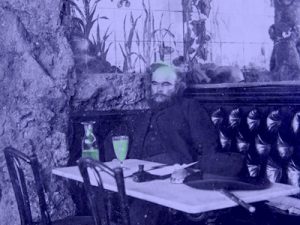With the death of Booker T. Washington in 1915 came the rise of a new attitude in African-American art and culture. Racism in American had steadily grown worse, and compromise solutions were having little effect.
It was the combination of African American migration to Northern cities and the radical voice of W.E.B. DuBois that called for a new social order, including equal treatment of races and sexes, and a black criteria for black art. DuBois encouraged African-American citizens to let their talents flow and express their identity and heritage, instead of run away from it or pretend it didn’t exist. DuBois also called for literature and art that spoke out against racial oppression and racism. The response came to be known as the Harlem Renaissance.
THE WRITERS
Poets were responsible for much of the recognition and fame of the Harlem Renaissance. During this time, poet James Weldon Johnson expressed the need for new symbols and use of the English language in the poetry of new African American authors. Langston Hughes responded with a style that was influenced by the free form poetry of Carl Sandburg, Walt Whitman, and Paul Laurence Dunbar, combined with the language and rhythm of jazz and the blues, the music of the Renaissance. Sterling Brown also responded with a similar, gritty style of poetry.
Claude McKay and Countee Cullen preferred traditional forms of verse found in European poetry. McKay was a Jamaican immigrant who wrote powerful and sometimes militant racial protest poems. Countee Cullen was a middle class intellectual whose poetry was modeled after romantic poets like John Keats. Their poems were similiar in form, but their subject matter embraced everything from love to the confusion of being a minority writer.
Women poets of this era did not recieve as much recognition, partly because of the lack of patronage, but also because they were ignored by the individuals who most aided recognition of Renaissance writers, such as Alain Lock (who wrote “The New Negro” in 1925). Some of these poets included Anne Spencer, Georgia Douglas Johnson, and Gwendolyn Bennett.
One of the most innovative writer from this period was Jean Toomer, whose major work “Cane” did not fall into any category. Influential fiction writers of the time included Nella Larson, who has been a source of feminine study lately. The satirical novels of Wallace Thurman and George Schuyler were also popular at the time. Zora Neale Hurston was just beginning to write during this time, and even co-wrote a play with Langston Hughes, which was only released in the early 1990’s.
With the stock crash of 1929 came the end of the Harlem Renaissance, giving way to the new art known as the Reformation.



